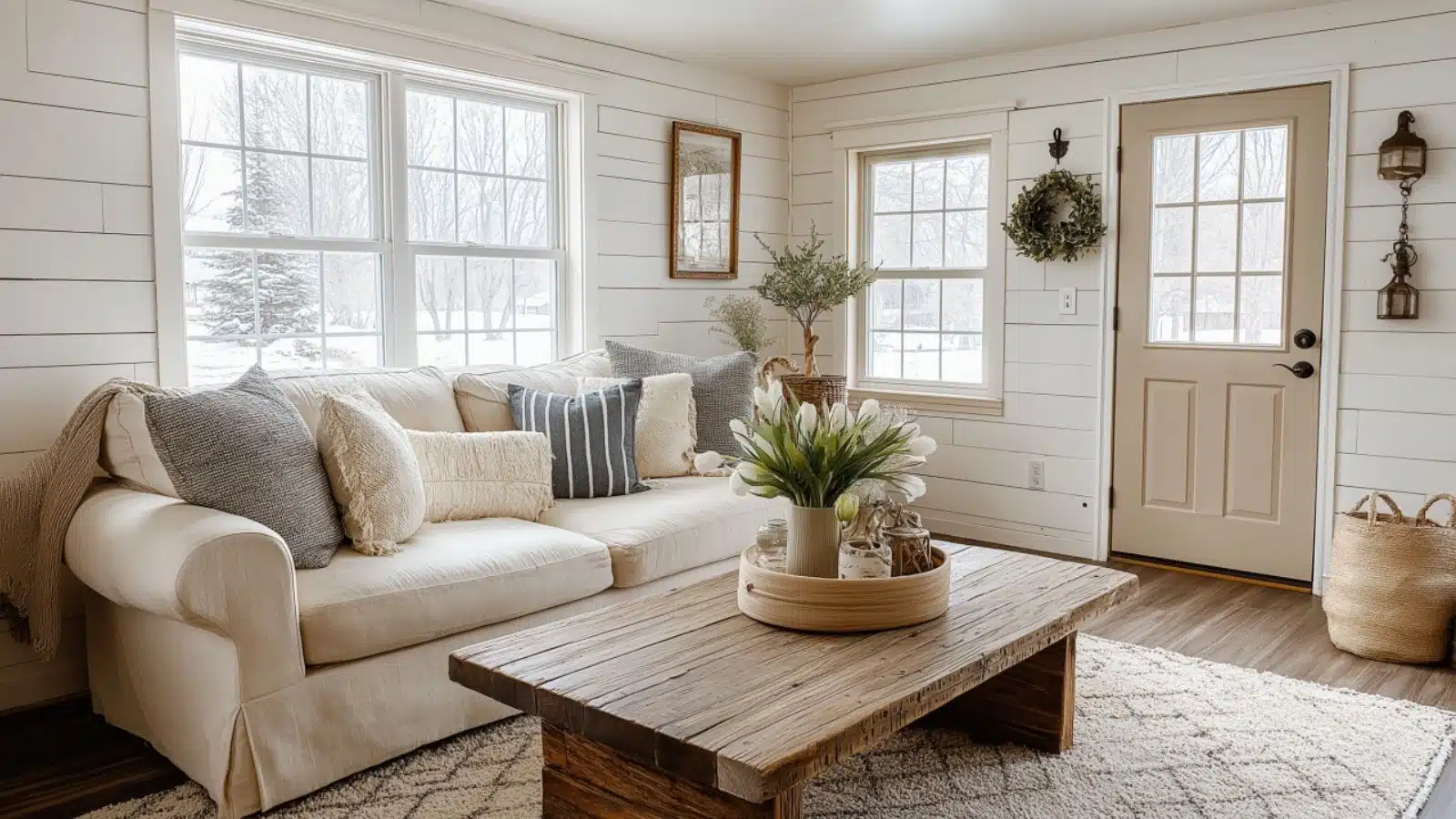Vintage Farmhouse Decor That Instantly Warms Up Any Space with Timeless Charm
Table of Contents
There’s something undeniably comforting about stepping into a space that feels like a warm hug. That’s the magic of vintage farmhouse decor—a style that blends timeless charm with rustic simplicity to create spaces that feel lived-in, loved, and inviting. In a world where sleek modern interiors dominate, many homeowners are returning to cozy, authentic looks that tell a story. According to interior design trend reports, searches for “farmhouse aesthetic” have steadily increased, especially when paired with terms like “vintage,” “cozy,” and “authentic.”
But what truly sets vintage farmhouse decor apart is its ability to warm up a space instantly. Whether it’s weathered wood, antique brass hardware, or hand-stitched linens, every detail feels curated with heart and history.
This post will guide you through the essential elements of vintage farmhouse style, from foundational materials to cozy styling tips. You’ll discover how to repurpose vintage finds, style furniture with intention, layer natural textures, and integrate this look seamlessly—whether you live in a countryside cottage or a modern apartment. Get ready to transform your home with the most charming and soul-soothing design ideas that vintage farmhouse decor has to offer.
Start With Reclaimed Wood for Instant Character
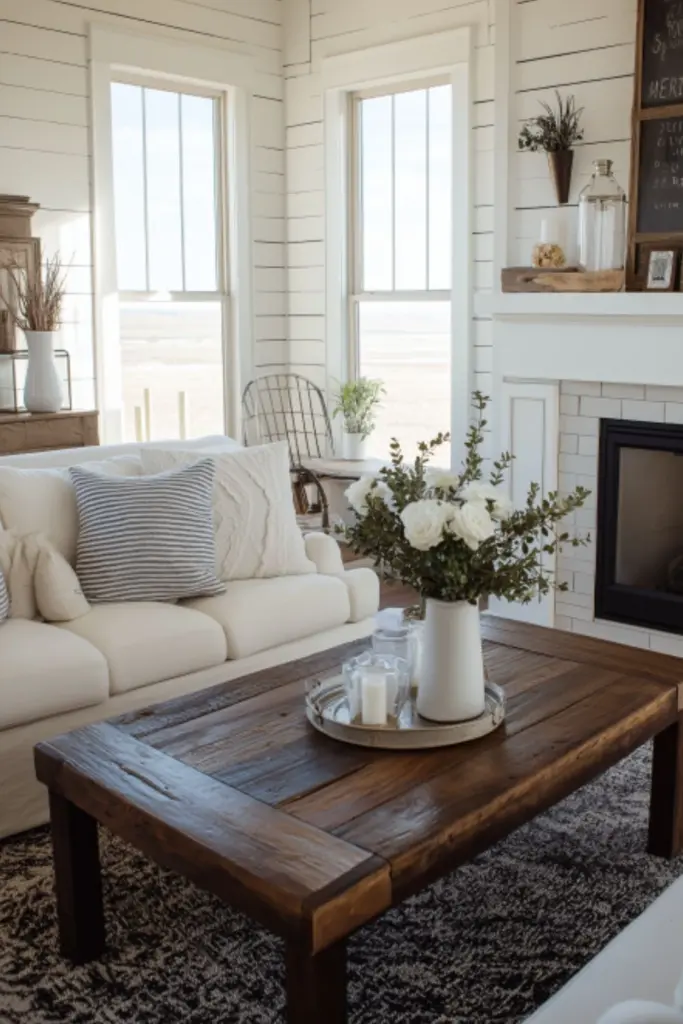
Reclaimed wood is the heartbeat of vintage farmhouse design. Its natural imperfections—nicks, grooves, and patina—tell stories of the past and create visual warmth unmatched by newer materials. Whether it’s a coffee table made from old barn beams or a set of open kitchen shelves crafted from salvaged floorboards, reclaimed wood adds soul.
To incorporate it, consider your major surfaces. Replace a modern console with one made from distressed pine, or add wood paneling to a focal wall. Even small touches—like reclaimed wooden picture frames or mirror borders—make a difference.
Ways to Incorporate Reclaimed Wood
| Feature | Idea | Effect |
|---|---|---|
| Accent wall | Shiplap or barn wood paneling | Rustic charm and texture |
| Furniture | Dining table, sideboard, or benches | Functional warmth |
| Decor | Wood trays, frames, or candle holders | Small, impactful details |
| Shelving | Floating kitchen or bathroom shelves | Blends utility with vintage appeal |
Mix Antique and Rustic Furniture Pieces
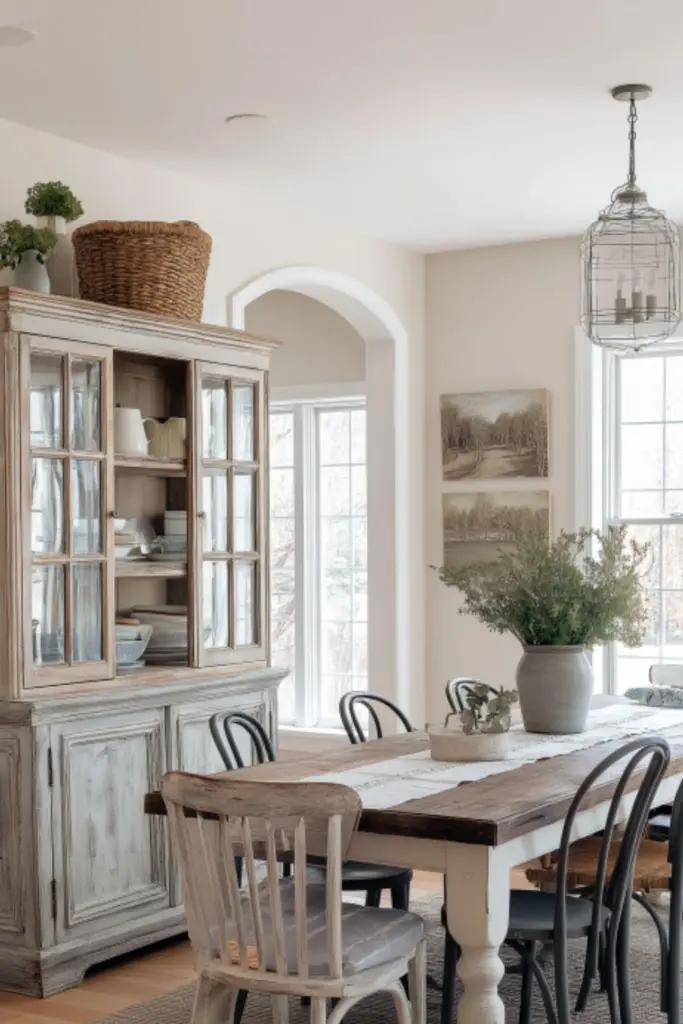
The charm of vintage farmhouse decor often lies in the contrast between the refined and the rugged. Combining antique furniture with rustic finishes brings balance and authenticity.
Look for items like a timeworn dresser, a spindle-leg side table, or a pie-safe cabinet with chipped paint. Pair these with simple slipcovered sofas or neutral-toned armchairs to keep the space grounded.
It’s not about matching—it’s about curating. A farmhouse room should feel collected over time, not bought all at once. The key is mixing tones (warm oak, soft whites, muted greys) and shapes while ensuring function is never sacrificed for form.
Mixing Old and New
| Element | Antique Option | Rustic/Modern Counterpart |
|---|---|---|
| Seating | Vintage rocking chair | Neutral slipcovered couch |
| Storage | Distressed armoire | Streamlined woven baskets |
| Tables | Spool-leg side tables | Raw wood coffee table |
| Lighting | Lantern pendant | Modern farmhouse sconce |
Layer Textiles for Softness and Depth
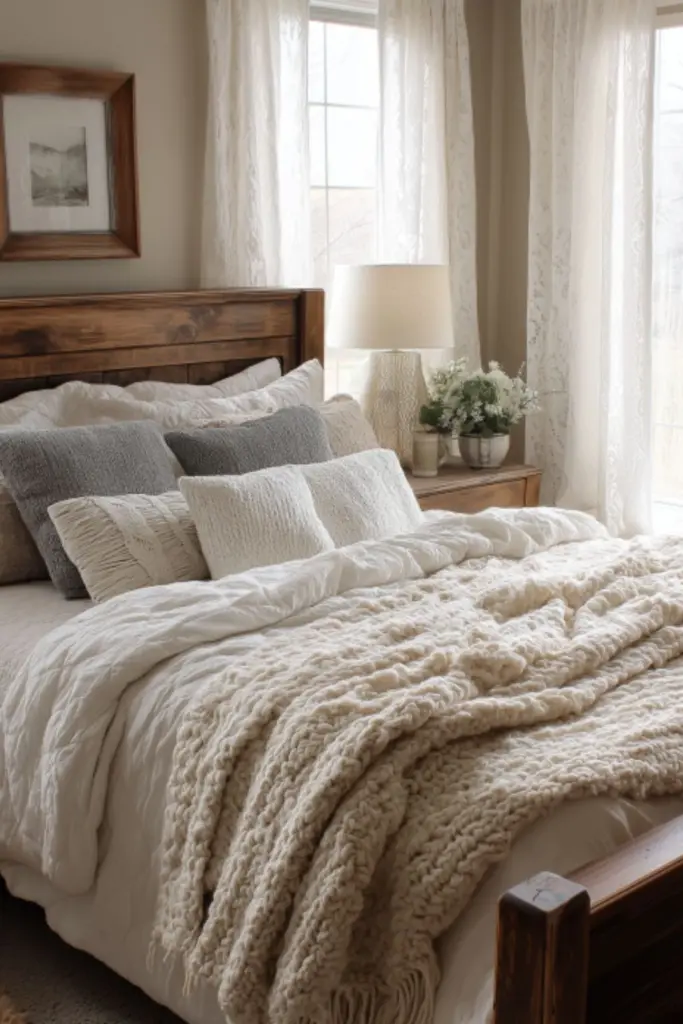
Nothing says comfort quite like layers of soft, lived-in textiles. From chunky knit throws to grain sack pillows and lace-edged curtains, farmhouse decor thrives on natural fabrics with tactile appeal.
Stick to muted tones—ivory, taupe, sage, and dusty rose—and focus on layering. A linen table runner over a reclaimed wood table, wool throws on a vintage armchair, or sheer cotton curtains hung from an iron rod can all soften a room.
Textiles also let you change up the look seasonally. In cooler months, bring in flannel blankets and plaid cushions. When it’s warmer, switch to airy cottons and vintage florals.
Farmhouse Textile Layers
| Fabric Type | Use Case | Vibe Created |
|---|---|---|
| Linen | Tablecloths, curtains | Light, airy elegance |
| Wool or flannel | Throws, blankets | Cozy and comforting |
| Grain sack cotton | Pillow covers, bench cushions | Authentic farmhouse utility |
| Lace | Window treatments, table runners | Feminine and vintage charm |
Decorate with Vintage Kitchenware and Antiques
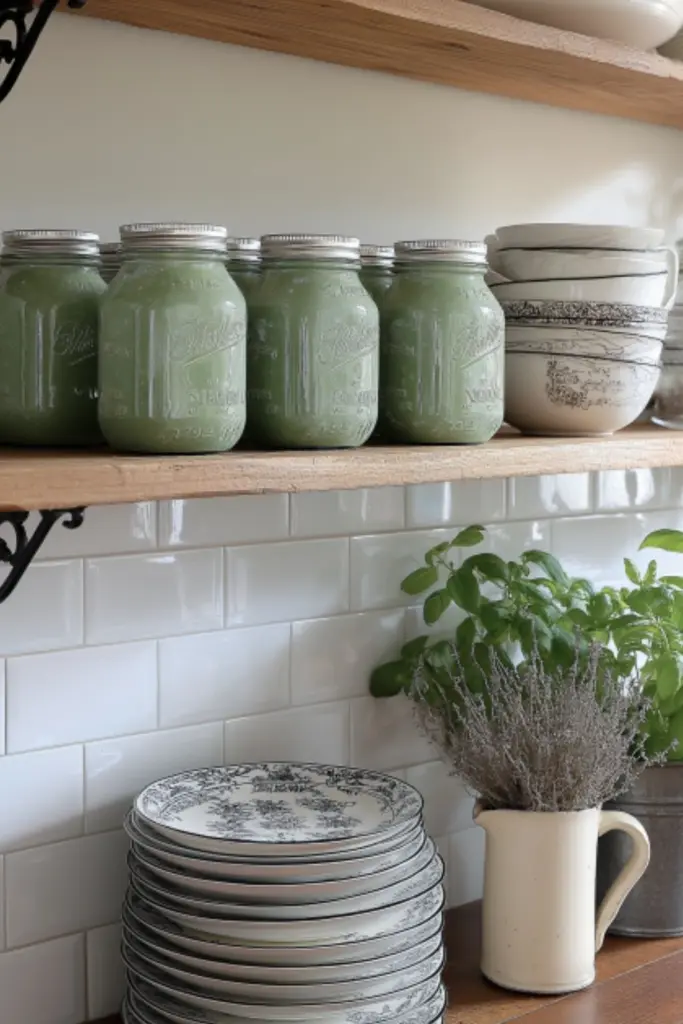
One of the easiest (and most fun) ways to warm up a space is to decorate with vintage treasures. Think enamel pitchers, copper pots, ironstone dishes, or Mason jars used as vases.
The key is purposeful placement—curate small vignettes on open shelves, create a seasonal display on a buffet, or hang antique kitchen tools as wall art. Flea markets, estate sales, and online vintage shops are great places to find unique, affordable items.
Even a single well-worn item, like a butter churn or old bread board, can anchor a space in nostalgia and bring a sense of story to your decor.
Charming Vintage Accents
| Item | Display Tip | Adds Warmth Through |
|---|---|---|
| Enamelware pitcher | Fill with dried lavender on open shelving | Color and scent |
| Mason jars | Use as vases or utensil holders | Practical charm |
| Ironstone dishes | Stack on open hutch shelves | Classic white-on-wood contrast |
| Copper pots | Hang above kitchen island | Shine and rustic elegance |
Embrace Warm Neutrals and Soft Color Palettes
Color plays a central role in evoking the cozy, timeworn feel of vintage farmhouse decor. Instead of stark white or trendy bold colors, opt for warm neutrals and soft shades inspired by nature and aging materials.
Consider walls in creamy white or warm greige, paired with accents in sage green, dusty rose, muted blues, or soft ochres. These colors are not only calming—they feel rooted in history, reminiscent of milk paints and natural dyes used in early American homes.
Add interest by layering tonal shades. For example, combine warm taupe walls with soft ivory curtains, then introduce a dusty blush pillow or a pale green throw. Keeping tones within the same temperature (warm, not cool) helps maintain that signature cozy ambiance.
Painted furniture is another way to introduce warmth subtly. A weathered mint green dresser or a soft grey console table can ground a room without overwhelming it.
Vintage Farmhouse Color Guide
| Color Name | Where to Use | Mood Created |
|---|---|---|
| Creamy white | Wall color, slipcovers | Airy and open |
| Warm greige | Cabinetry, wood trim | Sophisticated warmth |
| Sage green | Accent walls, accessories | Earthy and calming |
| Dusty rose | Throw pillows, florals | Soft and inviting |
| Muted blue | Decor accents, painted furniture | Subtle contrast |
Add Farmhouse Lighting Fixtures with Vintage Flair
Lighting in vintage farmhouse design isn’t just about illumination—it’s about atmosphere. The right light fixture can instantly shift a space from basic to beautifully styled.
Start by replacing modern fixtures with those that offer vintage appeal: gooseneck sconces, schoolhouse pendants, mason jar chandeliers, or iron lantern lights. Distressed finishes like aged brass, oil-rubbed bronze, or matte black complement the rustic style without overpowering it.
Layer lighting types for depth. Use table lamps with ceramic or glass bases, add wall sconces for ambiance, and use statement ceiling lights in dining or living rooms. Always opt for warm-toned bulbs to enhance the cozy, golden glow that defines vintage farmhouse warmth.
Lighting Style Breakdown
| Fixture Type | Ideal Location | Mood Set |
|---|---|---|
| Gooseneck wall sconce | Hallway, bathroom | Functional with old-world charm |
| Schoolhouse pendant | Kitchen island, dining table | Classic, clean vintage feel |
| Mason jar chandelier | Living room, entryway | Rustic focal point |
| Iron lantern pendant | Over stairways or dining rooms | Dramatic yet cozy |
Conclusion
Vintage farmhouse decor is more than a style—it’s a feeling. It’s the warmth of worn wood beneath your feet, the soft glow of iron lanterns overhead, the quiet character of handpicked antiques that tell a story without saying a word. Whether you’re layering natural fabrics, salvaging history through reclaimed wood, or mixing old and new, every detail matters.
By embracing vintage farmhouse elements, you can transform any space into a warm, welcoming retreat filled with soul and style. It’s not about perfection; it’s about personality, history, and comfort. And in that beautiful blend, your home becomes not just a place to live—but a space to truly belong.
2/2

